In Part I we laid out the overall picture of what this research dig would explore. Each part will provide more detail as to how the infiltration took place. At the heart of this series is the assertion that from 1914 – 1947, Prussia embarked on a 33-year mission to become completely invisible, a feat which simultaneously involved the infiltration of the US.
Trying to locate and describe an invisible enemy is a bit like completing a kid’s ‘join-the-dot’ picture, without the numbers on each dot. It takes some time and research to work out how the dots must be connected.

We can see that the German empire had drawn the entire world into two World Wars. Off the back of this, America was plunged into ‘eye-watering’ debt during 1917 – 1945, unmatched until today. The only winners were the large multinational corporations who benefited by supplying both sides with the latest military technology and logistics. The stakeholders, directors and financiers of these private corporations could all be linked to Prussia.
By 1947, Prussia was officially abolished as a State, Germany lay in ruins and America was drowning in debt. The collective globalist corporations and banking system had become the largest and most influential entity in the world. How on earth could this have happened?
Leading up to WWI, Prussia was firmly in control of the German Empire. The terrorist group that triggered WWI appeared eerily connected to the German military, indicating that WWI was planned well in advance. Furthermore, the tactics used by Germany disrespected existing treaties and the accepted principles of warfare. In short, Germany had gone rogue.
By 1916, Germany was under a de facto military dictatorship, financing Lenin’s Bolshevik Revolution and goading America into the war. The end-result would be a communist Soviet Union and a debt level so high in America that income taxes would be needed to pay it all back, with interest.
Kaiser Wilhelm II, Paul von Hindenberg, Erich Ludendorff, Paul Warburg and Samuel Untermyer all played pivotal roles in forming this terrain-of-conflict that would exist decades into the future.
1906: The Schlieffen Plan
There’s little doubt that many global plans were crafted during the 1871 – 1917 window of Prussian infiltration. Well before the outbreak of WW1, the Reichswehr had a military strategy to simultaneously conquer Eastern and Western Europe. While significant, this plan is not particularly surprising, given that the invisible hand behind the Prussian ideology had been preparing for a war of annihilation for centuries. The men involved in the implementation of these plans would control global geopolitics for the next century.
The Schlieffen Plan was known as “the Plan” and this article will show that it was always destined to fail.
https://www.thegreatcoursesdaily.com/wwi-failure-schlieffen-plan/
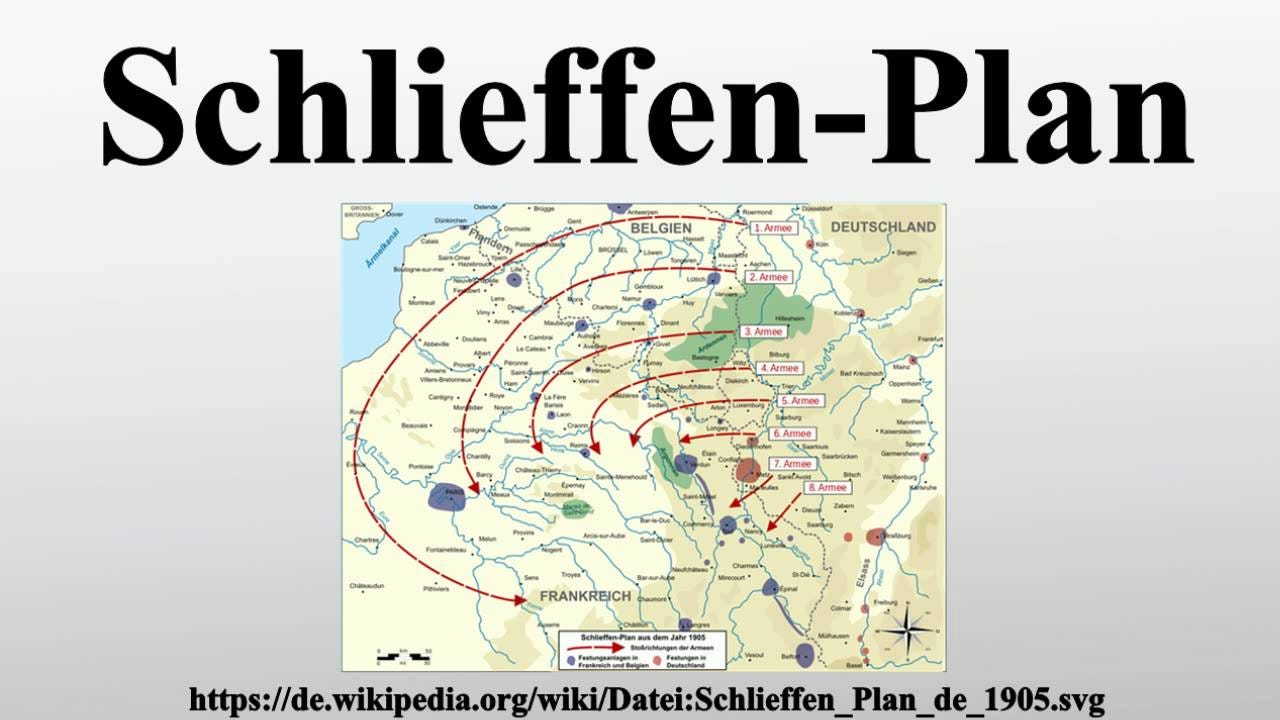
General Alfred von Schlieffen was the German General Chief of Staff from 1891-1905. He developed a strategy that would achieve victory in a two-front war. To the West, Germany would attack France through Belgium, at lightning speed. After destroying France, Germany would about-face and immediately attack Russia, who had archaic military technology and would be slow to mobilize. It was incredibly ambitious.
The Plan involved the breaking of several international treaties and the mobilization of an entire nation to annihilate the enemy. What could go possibly go wrong?
General Schlieffen died in 1905, never seeing the fruits of his ambition. Helmuth von Moltke “the Younger” took over as the General Chief of Staff in 1906. If there is any doubt that the German military was planning to mobilize its entire population for war, Helmuth’s uncle (von Moltke “the Elder”) revealed what the military was prepared to do:

https://en.wikipedia.org/wiki/Schlieffen_Plan
The German General staff were preparing for total unrestricted warfare in Europe a decade before WWI even started. Please re-read and carefully consider this statement. To fully understand this, one must understand two main points about the Schlieffen Plan.
Firstly, it was not a practical or workable solution. Breaking international treaties placed the German Empire in a lose-lose situation. If they lost they war, they lose, but if they win the war, they would raise the ire of the rest of the Europe and spark a century of uprisings. The Plan was a geopolitical disaster.
Secondly, the two men implementing the Schlieffen Plan were also pivotal in the far-reaching global events occurring between 1914 – 1947. General Paul von Hindenberg and his deputy, Erich Ludendorff, would eventually control Germany in a military dictatorship, along-side the Kaiser. This would completely reshape Germany, and ultimately the world.
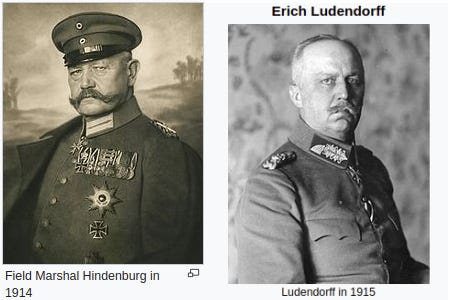
Unsurprisingly, both Hindenberg and Ludendorff were of Prussian heritage.
1914: The Trigger
Six months after the creation of the U.S. Federal Reserve banking system, a relatively small event kicked off the largest war the world had ever seen. Archduke Franz Ferdinand was assassinated in Serbia along with his wife, Duchess Sofie of Hohenberg.
Ferdinand was assassinated by Gavrilo Princip, a young Bosnian revolutionary who was part of the group known as the “Black Hand”. The other name embraced by the Black Hand was the “Unification of Death”. The logo for this group is remarkably similar to Frederick the Great’s military insignia, known as the ‘totenkopf’. It is also remarkably similar to the Skull and Bones logo.

https://en.wikipedia.org/wiki/Black_Hand_(Serbia)
The name “Unification of Death” was apparently inspired by the unification of Italy, but more importantly, it was inspired by the unification of Germany in 1871, where the King of Prussia was now the Emperor (or Kaiser).
The leader of the group, Dragutin Dimitrijević, was the chief of military intelligence in Serbia. Around 1906, Dragutin spent time in Germany where he studied “the latest military programs”.
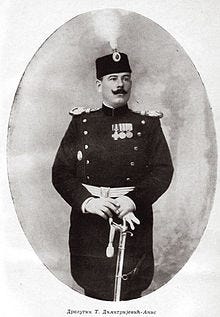
In 1906, the latest military program in Germany was the disastrous Schlieffen Plan. It is impossible to think that Germany would divulge such a plan to a foreigner, unless he was a spy. Secret military strategies are simply not disclosed to anyone who is not meant to know.
Recall, in the 18th Century Frederick the Great built the most elaborate espionage network in the world. Spying and infiltration was the Prussian way. A united Germany under the Prussian Kaiser would surely have maintained the same spy networks and strategies that earned him the honor of being inaugurated Emperor in 1871. The symbolism behind Dragutin’s “Black Hand” group supports this assertion of a continuity-of-strategy.
When Archduke Ferdinand was assassinated by the Black Hand, the world changed. World War I escalated at a staggering pace and Germany was at the center of all the bloodshed. Nothing on earth would ever be the same.
1914: A State gone rogue
Archduke Ferdinand was the heir to the Austrian throne. For Austria, this assassination could justify a war against Serbia. Before doing so, Austria sought assurances from the Kaiser that Germany would support their fight against Serbia. The Kaiser and his Reichswehr were happy to oblige. The Schlieffen Plan had just received the greenlight.
On July 28, 1914, Austria declared war on Serbia. Within one week, Germany declared war on Russia, France and invaded Belgium, as per the insane Schlieffen Plan. Immediately, Great Britain protested the invasion of Belgium as a violation of the Treaty of London. They were correct, but Germany spat in the face of Britain by declaring the treaty a piece of “scrap paper”. The entire Commonwealth of Great Britain then declared war on Germany.
Astonishingly, some of the first shots fired were on the other side of the world, in Melbourne, Australia. The SS Pfalz surrendered in Melbourne. (Note: What the German navy was doing in Australia at this exact time may be the topic of another very interesting #PrussiaGate investigation).
Whatever the case, within a week the world was immersed into total chaos.
While Austria entered the war in retaliation for the assassination of Archduke Ferdinand, Germany invaded nations, broke treaties and waged war on the rest of the world. Like an angry drunk in a bar, Germany was swinging punches at anyone and everyone. This did not appear to be a strategy that would bring victory, but one that would bring chaos. Unswervingly, the Reichswehr continued to carry out the Schlieffen Plan, believing it may actually work, or fail. You can deliberate that one, for yourselves.

And so, history records that the Schlieffen Plan was progressing, albeit slowly. Germany had managed to use Belgium to attack France from the North. However, the game-changing “punch in the mouth” occurred when the commander of the German first army, General Alexander von Kluck, decided to help the commander of the German second army, in a time of need. The French Marshall, Joseph Joffre, had found the precise moment to strike.
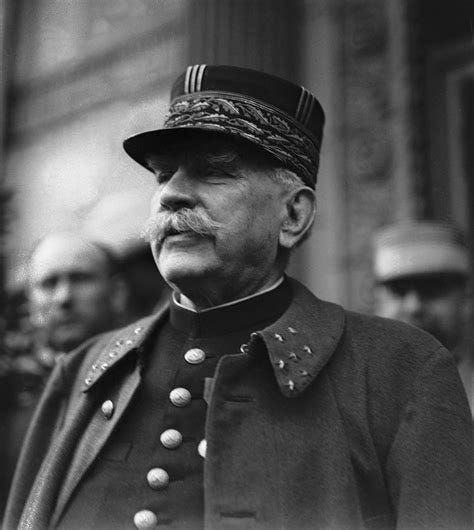
(Joseph Joffre)
Joffre struck General von Kluck’s army at the precise moment that he over extended his troops. This was known as the “Battle of the Marne” and it effectively signalled the end of the Schlieffen Plan. Strategic warfare had ended and the long march into trench-warfare had commenced.
Germany was hamstrung geopolitically, having insulted almost every other European power. The commander of the Schlieffen Plan, Moltke “the Younger”, was fired and the Reichswehr were looking for a new solution.
Germany had successfully gone completely rogue and isolated itself from any major support.
1916: German Military Dictatorship
Having lost local support in Europe and also engaged the world in a significant war, is it even possible to identify Germany’s broader global strategy, amidst this mess?
We notice that two years into WWI Germany was fighting a two-front war, thanks to this disastrous Schlieffen Plan. By 1916, the only known outcome was an incredible loss of life, mainly due to the efficiency of new weaponry. Strategy had been abandoned for trench-warfare nonsense.

https://ethw.org/World_War_I_Technology
Amongst this world-wide chaos, three men quietly slipped into power. The Kaiser, General von Hindenberg, and General Ludendorff formed the “Third Supreme Army Command”. What did this mean? Essentially, they had just assumed a de facto military dictatorship.
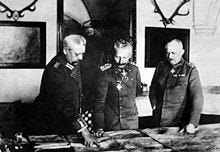
https://en.wikipedia.org/wiki/Oberste_Heeresleitung
Due to the enormous cost of the failed Schlieffen Plan, the Prussian trio took control of the Empire’s military, political and economic affairs. Understanding the existential fate of Germany, they made a series of bizarre strategic moves in 1917 (which we outlined in Part I). The most significant move was to goad America in the Great War.
https://truthtrench.org/?p=12466&preview=true
The Prussian infiltration of its next host had already been confirmed by the integration of the Federal Reserve banking system in the US. Once Prussia has a new host, it systematically destroyed its previous host. Having moved the Prussian power base into the US, Germany could now be obliterated, because it had served its purpose in a much broader, global plan.
In the article Prussian Origins of Marxism we provided evidence that the Bolshevik Revolution was part of the Prussian playbook to infiltrate and eventually collapse Tsarist Russia, using Marxism. Supporting this, the Sisson documents claim that the entire management-team of the Bolsheviks may have actually been the German military!
https://truthtrench.org/?p=3652&preview=true
The timing of the provocation of America into WW1 could not have been more precise. With the new Federal Reserve banking system and income tax structures in place, the US Government was in a position to build an enormous military machine. History recalls that this would be an expensive exercise that would place America into a spiral of debt that would not end until 1945.
1917: Attacked like never before
The decisions made by the new German Supreme Army Command were more like a suicide mission. For the people of Germany, it was. Their livelihoods and collective psychological state were on a path of destruction that would not begin to slow down until 1945.
Remember that the Prussian ideology is all about control, not ownership. It achieved this by infiltrating academia, religion, government, secret societies and clubs. Their members became Presidents, Supreme Court Justices, Secretaries of War and CEOs of the largest corporations in the US, and eventually, the entire world.
In the article Prussian Origins of the U.S. Federal Reichsbank, we presented that Paul Warburg was instrumental in the creation of the Federal Reserve banking system. Warburg was a German-born banker who was the “marketer in chief” for the implementation of the Federal Reserve, a central bank that was modelled off the German Reichsbank.
Another man involved with the passing of the Federal Reserve Act was Samuel Untermyer. It is unclear if he was personally linked to Prussia, however he was of German heritage. We must therefore examine the ‘fruit of his labor’. Untermyer played one of the most important roles in the public campaign for the Federal Reserve Act.

Not only was Untermyer one of Woodrow Wilson’s largest contributors, he oversaw the Pujo Money Trust Hearings, narrating its findings into a marketing campaign for the central bankers. He eventually used the MSM to endorse the Federal Reserve Act and instate Paul Warburg into public view.

https://modernhistoryproject.org/mhp?Article=FedReserve&C=3.0
On August 10, 1916, Paul Warburg was appointed as the Vice Chair of the Federal Reserve. On the same day, President Wilson appointed William Harding as the Chairman of the Fed but also as the director of the War Finance Corporation. This corporation was created to “give financial support to industries essential for World War I, and to banking institutions that aided such industries”.
The establishment of the Federal Reserve bank, along with the Income Tax Act, ensured that America was ready to finance the creation of one of the world’s greatest military super-powers. The only thing needed was an incentive to convince the American people to ‘agree’ to be taxed.
In 1917, the infamous Zimmerman Telegram was “intercepted” by British intelligence and handed over to the United States, while German submarines were sinking American merchant ships. Germany admitted the telegram was authentic, and America would enter the conflict. The true Prussian plan for global domination was quietly coming into place. The demise of Germany would provide the perfect smoke-screen.
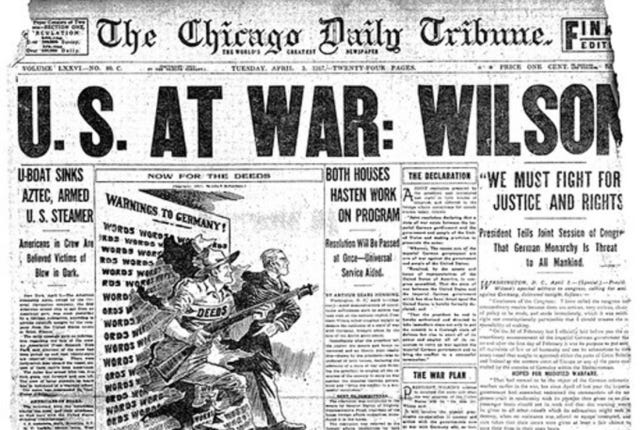
The people agreed. The economic cost to America was beyond anything seen before. The debt levels were even higher than the US Civil War.
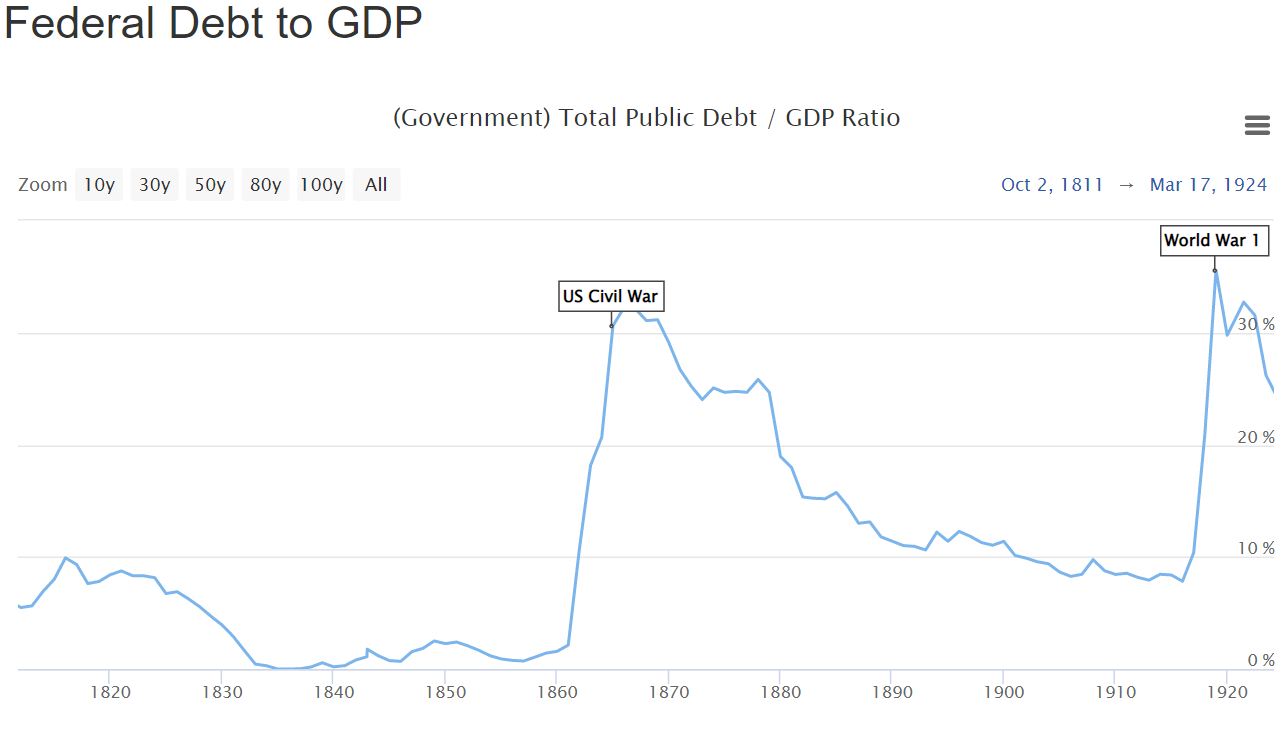
As we noted in Hegel, War, The Owl and the Slaves of Bohemia, General Smedley Butler tabulated the enormous cost of WWI on the American people:
https://truthtrench.org/?p=3656&preview=true.

This back-breaking taxation was needed to pay off the war debt. Who stepped up to the plate to advise the federal government on how to impose income taxes? Samuel Untermyer.

https://en.wikipedia.org/wiki/Samuel_Untermyer
As the national debt reached nose-bleed levels, a handful of globalist corporations made profits that were hundreds, even thousands of times higher than were possible during peacetime. General Butler illuminates:

Who was this small “inside” group?
I think we all know the answer to that question.
In the aftermath of the Great War, America was financing debt levels they had never experienced before with taxes they had also never experienced. In his final days in office, President Woodrow Wilson may have realized he had launched a “horrible invisible enemy”.
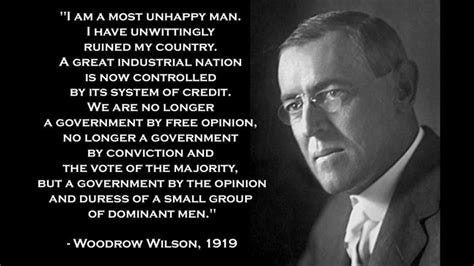
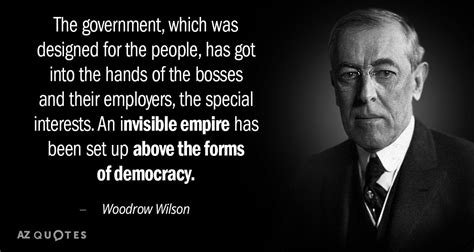
President Trump was right.
Unfortunately for humanity, this was only the beginning. The worst was yet to come.
